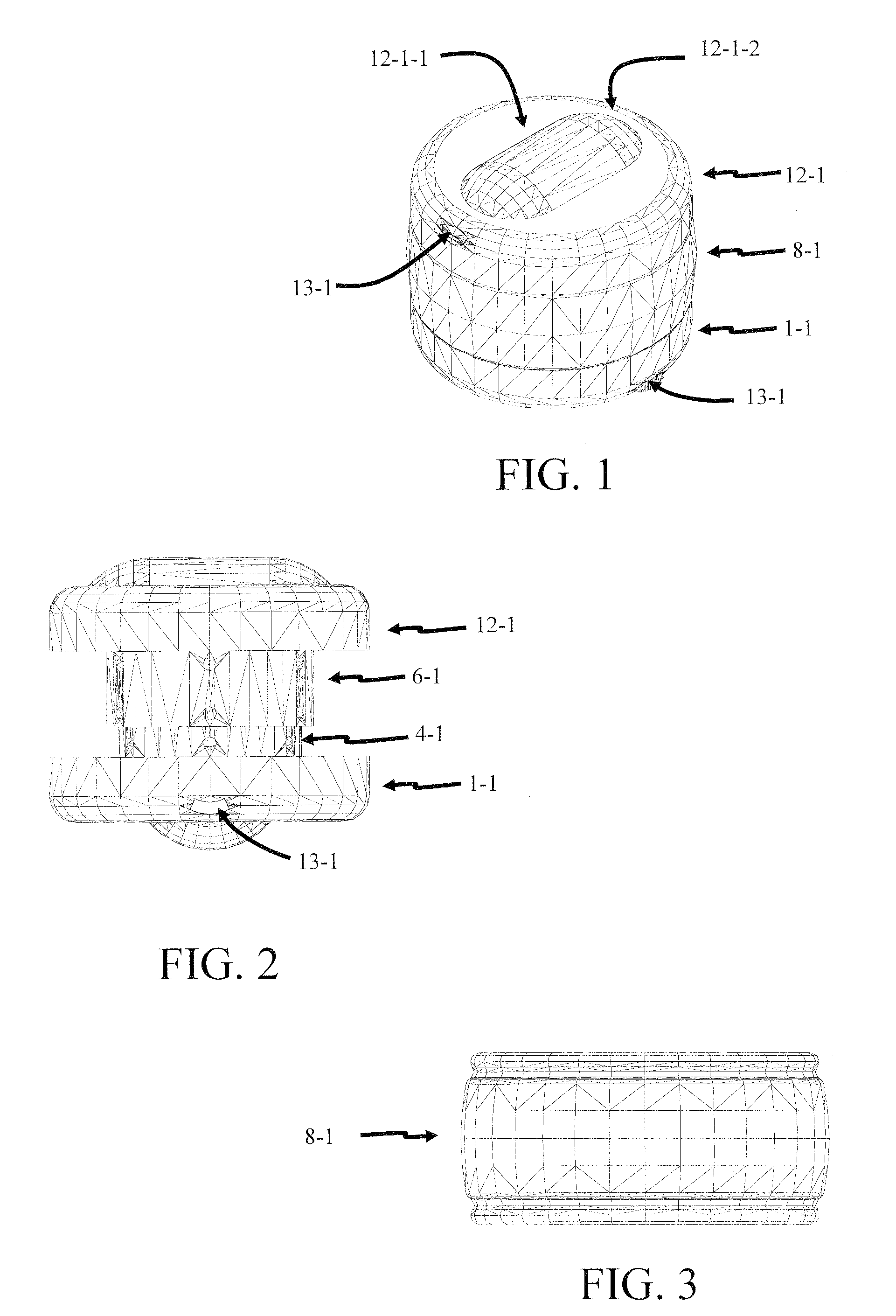Dynamic Six-Degrees-Of-Freedom Intervertebral Spinal Disc Prosthesis
a disc prosthesis and free-flow technology, applied in the field of dynamic six-degreesoffreedom intervertebral disc prosthesis, can solve the problems of excessive force on the facet, drastic treatment is usually inability to restore normal disc function, and further problems, and achieve the effect of facilitating sagittal, lateral, and axial vertebral displacement and rotation
- Summary
- Abstract
- Description
- Claims
- Application Information
AI Technical Summary
Benefits of technology
Problems solved by technology
Method used
Image
Examples
second embodiment
[0104]The motion elements of the prosthetic device of the subject invention can be fabricated of, for example, titanium steel, titanium-carbide-coated stainless steel, bio-inert hardened stainless steel, polyurethane, polyurethane thermoplastic, cobalt-chromium-molybdenum alloy, plastic, ceramics, glass, or other materials or combinations thereof. In a second embodiment, the motion elements of the prosthetic device of the subject invention can be fabricated with hardened stainless steel ball-bearings and bearing rods that can move on hardened stainless steel curvate or linear rods that fit into raceway cavities of the various titanium or plastic elements. In an alternative embodiment, a mix of polyurethane thermoplastic bearings and polyurethane, titanium, ceramics, cobalt-chromium-molybdenum alloy and titanium-carbide-coated hardened stainless steel components can be utilized. The device of the subject invention allows for joint limits and stops on all degrees of freedom, which per...
first embodiment
[0156]In further embodiments, the convex edge curvate surface 3-2-1 (10-2-1) and the concave wall surfaces 1-2-8 and 1-2-9 (12-2-8 and 12-2-9) of the inferior (superior) vertebral socket which plate 3-2 (10-2) encounters during all its possible motions with respect to 1-2 (10-2) are all conformal to 3-2-1 (10-2-1) and do not interfere with each other, just like the corresponding surface in the first embodiment do not interfere. Planar surface 1-2-9 (12-2-9) can act as a joint limit stop for the sagittal (lateral) revolute joints. Plate 3-2 (10-2) when rotated about 16-1 (17-1) against surface 1-2-9 (12-2-9), will inhibit any further rotation of the sagittal (lateral) revolute joint.
[0157]A partial cutaway perspective of an embodiment of the sagittal revolute and slider joints is shown in FIG. 38. The slider displacements 20-2 can be seen in this view. Description of these joint embodiments and their constituent elements follow.
[0158]Many of the features of the sagittal rotation cyli...
PUM
| Property | Measurement | Unit |
|---|---|---|
| degrees of freedom | aaaaa | aaaaa |
| degrees of freedom | aaaaa | aaaaa |
| degrees of freedom | aaaaa | aaaaa |
Abstract
Description
Claims
Application Information
 Login to View More
Login to View More - R&D
- Intellectual Property
- Life Sciences
- Materials
- Tech Scout
- Unparalleled Data Quality
- Higher Quality Content
- 60% Fewer Hallucinations
Browse by: Latest US Patents, China's latest patents, Technical Efficacy Thesaurus, Application Domain, Technology Topic, Popular Technical Reports.
© 2025 PatSnap. All rights reserved.Legal|Privacy policy|Modern Slavery Act Transparency Statement|Sitemap|About US| Contact US: help@patsnap.com



